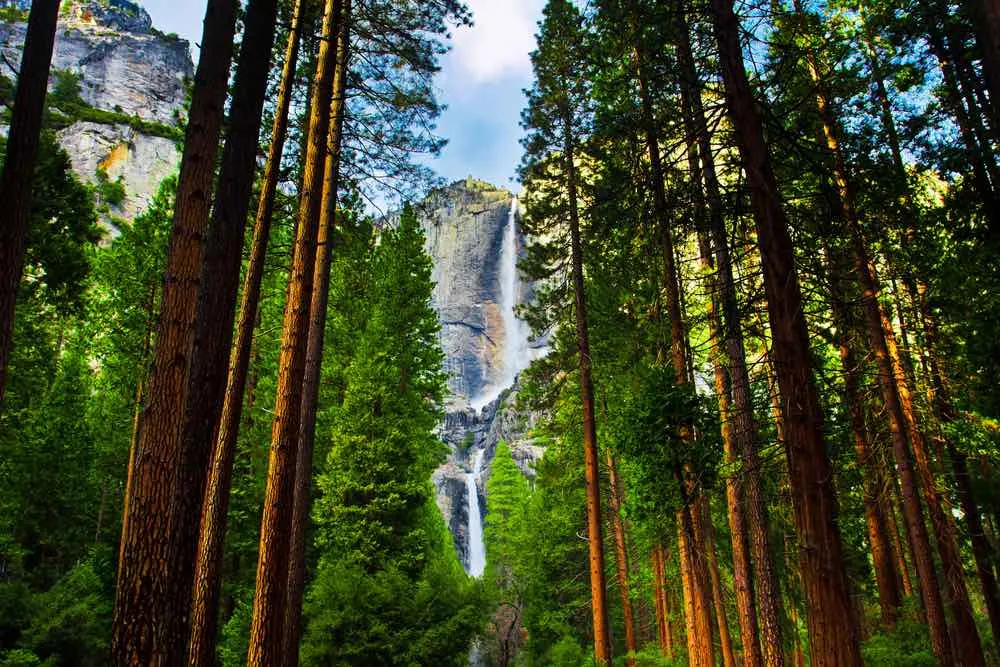California is home to an impressive array of national parks, each offering unique and diverse experiences for visitors to explore and appreciate. As a state with the highest number of national parks in the United States, California’s landscapes range from the majestic redwood forests in the north, to the awe-inspiring deserts and unique flora found in the south. These protected lands provide a haven for countless plant and animal species, while also serving as important spaces for education, recreation, and environmental conservation initiatives.

Among the nine national parks located within the state, some of the most renowned are Yosemite, Joshua Tree, Death Valley, and Redwood National Park. Each park boasts its own unique features and attractions, showcasing the rich biodiversity and stunning scenery that California has to offer. From the remarkable ancient trees of Redwood to the otherworldly charm of Joshua Tree, these parks attract millions of visitors from around the world each year, who come to connect with nature and explore the vast and varied landscapes of the Golden State.
Visitors exploring California’s national parks are not only met with unforgettable experiences but also contribute to the efforts in preserving these pristine and unparalleled environments for future generations. With ongoing conservation efforts and a dedication to maintaining these diverse ecosystems, California’s national parks will continue to be a testament to the wonder and beauty of the natural world.
California’s Top National Parks
Yosemite National Park
Yosemite National Park is one of the most visited national parks in the U.S. Located about 140 miles southeast of Sacramento in northern California, it welcomes millions of visitors each year. The park is renowned for its granite cliffs, waterfalls, clear streams, giant sequoia groves, and diverse plant and animal life. Some must-see spots in Yosemite include Half Dome, El Capitan, and Yosemite Falls.
Sequoia National Park
Sequoia National Park, established in 1890, is famous for its immense giant sequoia trees, including the General Sherman Tree, which is the largest tree in the world. Visitors can enjoy exploring the park’s stunning landscapes, hiking trails, and marveling at the astonishing size of these ancient trees.
Redwood National and State Parks
The Redwood National and State Parks are home to the tallest trees on Earth – the ancient coast redwoods. These parks protect nearly half of the world’s remaining old-growth redwoods, offering visitors a unique chance to walk among these towering giants and appreciate their beauty and significance.
Death Valley National Park
Death Valley National Park is the largest national park in the contiguous United States and one of the hottest, driest, and lowest places on Earth. The park features unique geological formations, such as salt flats, sand dunes, and colorful badlands, as well as wildlife specifically adapted to the harsh desert environment.
Kings Canyon National Park
Adjacent to Sequoia National Park, Kings Canyon National Park is characterized by deep canyons, rugged mountain landscapes, and scenic vistas. The park boasts the second-largest tree in the world, the General Grant Tree, and features numerous trails for hiking and backpacking.
Channel Islands National Park
Located off the coast of southern California, Channel Islands National Park consists of five islands, each with its own unique natural and cultural resources. Visitors can experience diverse plant and animal life, including many endemic species, as well as beautiful sea cliffs, coves, and marine ecosystems.
Joshua Tree National Park
Joshua Tree National Park is named after the iconic Joshua trees that populate the park and is known for its interesting geological features and unique desert ecosystems. The park offers a range of recreational activities, such as rock climbing, hiking, and stargazing.
Lassen Volcanic National Park
Lassen Volcanic National Park is home to Lassen Peak, the southernmost active volcano in the Cascade Range. The park showcases volcanic activity, hydrothermal features, and a diverse range of ecosystems, making it a fascinating destination for visitors to explore.
Pinnacles National Park
Pinnacles National Park is the smallest and newest national park in California, established in 2013. The park is famous for its unique rock formations and talus caves, which were formed by erosion and fault activity, creating a dramatic landscape for hiking and rock climbing. Additionally, the park is home to the endangered California condor, offering visitors the chance to spot this rare species.
Activities and Attractions
California’s National Parks offer a wide range of activities and attractions for visitors to enjoy. From exploring scenic landscapes to discovering historical sites, there is something for everyone in these diverse parks.
Outdoor Activities
Outdoor enthusiasts will find plenty of adventure in California’s National Parks. Hiking trails wind through pristine forests, majestic mountains, and stunning beaches. In Sequoia & Kings Canyon National Parks, visitors can walk among the world’s largest trees, including the famous General Sherman Tree. Redwood National and State Parks offer a chance to explore the tallest trees on Earth, as well as beautiful prairies and beaches in Northern California.
Enthusiastic campers will find a variety of campgrounds across the parks, like those in Point Reyes, where they can pitch a tent and immerse themselves in nature. For a more rugged experience, backcountry camping is available in several parks, such as Joshua Tree National Park, where campers can admire the unique desert landscape, striking rock formations, and iconic Joshua trees.
Historical Sites
California’s National Parks also preserve significant historical sites, offering visitors a chance to learn about and engage with the region’s rich history. Alcatraz in San Francisco Bay is a famous former federal penitentiary, where notorious criminals like Al Capone were once imprisoned. Another notable site, Manzanar, was once an internment camp during World War II, where thousands of Japanese Americans were forcibly relocated.
Visitors can also explore Cabrillo National Monument in San Diego, which commemorates the landing of Spanish explorer Juan Rodriguez Cabrillo in 1542 and features stunning vistas of the Pacific Ocean.
Scenic Landscapes
The breathtaking landscapes of California’s National Parks are both diverse and awe-inspiring. The dramatic cliffs and sea caves of Channel Islands National Park provide a stunning backdrop for visitors to enjoy. The park encompasses five islands, each with its distinct ecosystems and natural beauty.
In addition to the lush forests, Northern California’s Lassen Volcanic National Park boasts a variety of hydrothermal features, including hot springs, fumaroles, and mud pots. The park’s otherworldly geography creates striking contrasts between the verdant forests and barren, volcanic landscapes.
Death Valley National Park showcases some of the most extreme and unique landscapes in California, such as the Badwater Basin salt flats and the iconic Mesquite Flat Sand Dunes. Visitors to the park can experience both the striking desert landscape and scenic mountains that frame the valley.
In summary, California’s National Parks provide a wealth of diverse activities and attractions for visitors to explore. From outdoor adventures to historical sites and remarkable landscapes, these parks offer something for everyone.
Exploring the Parks
Park Locations
California is home to several spectacular national parks, each offering unique landscapes and experiences. Some of the most popular parks include Yosemite National Park, Joshua Tree National Park, and Sequoia & Kings Canyon National Parks. With parks spread across the state, visitors can explore diverse environments such as towering redwood forests, arid deserts, and snow-capped mountains.
Visitor Centers
The National Park Service manages California’s national parks, with visitor centers providing invaluable information, maps, and resources for travelers. These centers offer ranger-guided programs, interpretive exhibits, and permit services for backpackers wishing to explore the parks’ wilderness areas. Apart from the essential information, visitor centers are also the ideal places to purchase souvenirs and park passes.
Park Accommodations
Each park has its own unique accommodations, ranging from campgrounds to luxurious lodges. In Yosemite National Park, visitors can stay at the historic Ahwahnee Hotel or choose more rustic options like tent cabins in Curry Village. In Joshua Tree National Park, guests can find a variety of campgrounds, such as Jumbo Rocks and Hidden Valley, which are perfect for adventurous travelers looking to get closer to nature. Sequoia & Kings Canyon National Parks offer lodges, such as the John Muir Lodge and Wuksachi Lodge, that provide comfortable stays surrounded by majestic giant sequoias.
Visitors are encouraged to plan their trips well in advance, as accommodations within the parks get booked quickly, particularly during peak seasons. For those who prefer independent lodging options, nearby towns often offer additional hotels, motels, and vacation rentals.
